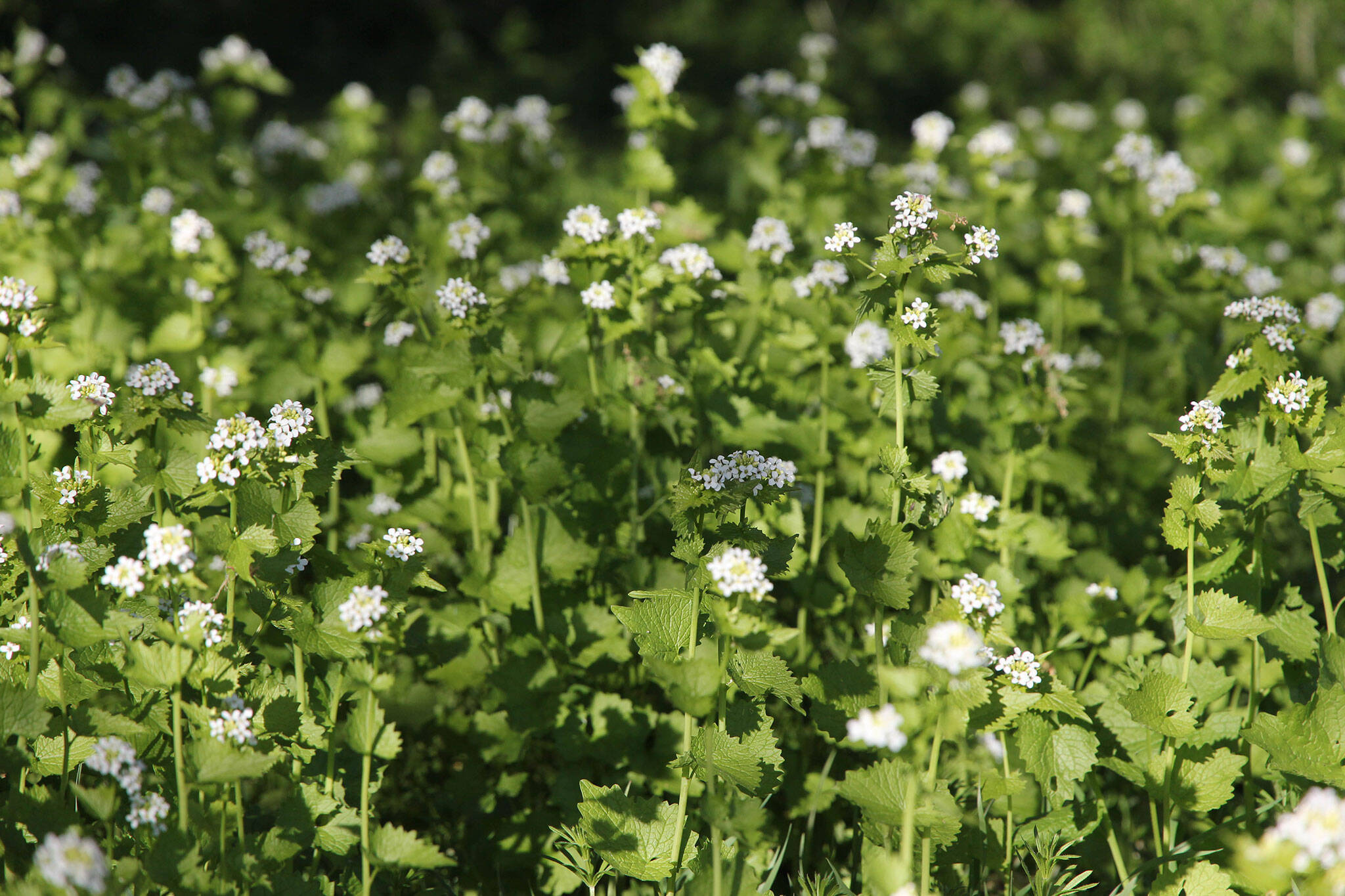
Invasive plant is clogging up Toronto's natural areas and you can help by eating it
An invasive plant has been quickly spreading across Toronto's ravines and natural landscapes, and it turns out the best defence against this green scourge is…a fork and knife?
Known by the delicious name of garlic mustard (Alliaria petiolata), this invasive species is just as tasty as it sounds.
It was its qualities in the kitchen that led to its intentional introduction to North America in the 19th century. Since arriving on the continent, the pesky herb has found its way into wild settings, and the provincial government now describes the plant as "one of Ontario's most aggressive forest invaders."
The plant threatens native wildflowers, including Ontario's provincial flower, the trillium, and several at-risk plant species. It does so by interfering with the growth of fungi that bring nutrients to the roots of the plants.
Despite its inherent ecological danger in out-competing native plants for resources and spreading at a worryingly fast rate, aggressive measures like pesticides and defoliants aren't really necessary in dealing with garlic mustard.
Instead, experts suggest you should just harvest and eat the stuff.
Its strong, distinctive smell — described as very similar to garlic — makes the plant a great addition to savoury dishes. It's also rich in vitamins A and C, adding some nutritional incentive for harvesting this aggressively-spreading plant species. Its lack of nutritional value for animals means you can harvest as much as you want, guilt-free.
You can identify the plants based on the two distinct life stages they grow through during their first two years. During the first year of garlic mustard growth, the plant is much harder to notice, appearing as a rosette-shaped cluster of leaves while a strong underlying root system is formed.
Second-year plants are much more apparent, growing up to 1.2 metres tall and bearing triangular, sharp-toothed leaves and white flowers.
It is during this second year that garlic mustard plants pose the most risk of spread, producing more than 60,000 seeds per square metre with the ability to double in size every four years.
The City of Toronto's Forestry Department recently embarked on a removal program, which included the removal of 40 bags of garlic mustard from the Beltline Trail.
Happy Sunday, Toronto!
— Toronto Forestry (@TOtrees) May 7, 2023
Today volunteers removed 40 bags Garlic Mustard and garbage along the Beltline Trail in partnership with the Friends of the Kay Gardner Beltline Trail.
Sign up for our mailing list to get all program updates at https://t.co/drYP2Tvhrb pic.twitter.com/LHLE0CxMGj
Hungry locals can find the plants in a wide range of sunny and shaded habitats, including forests, riverbanks, and roadsides.
Latest Videos
Latest Videos
Join the conversation Load comments







